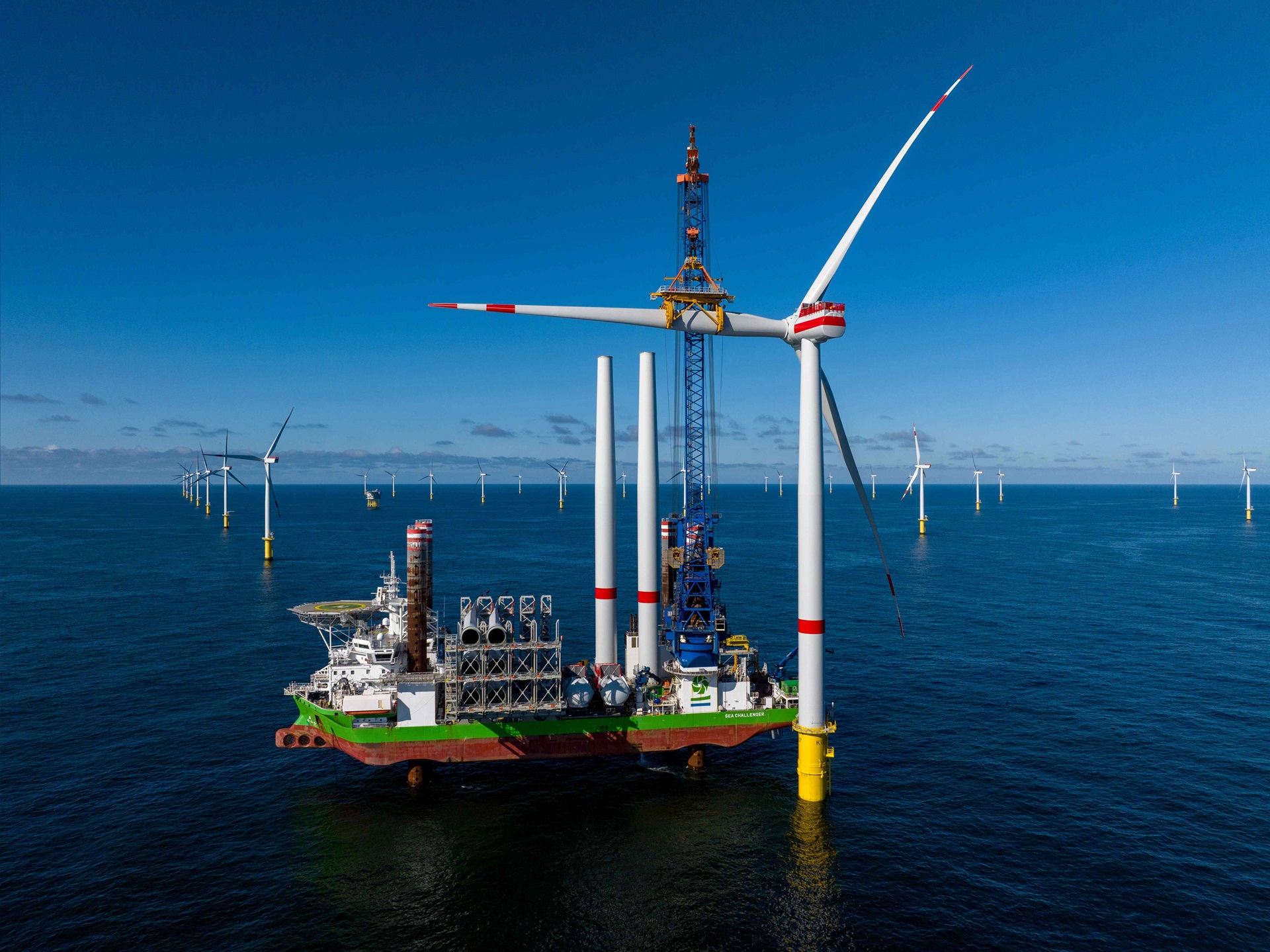RWE commissions 53.1 megawatt wind farm in Italy
17.07.2025


The last turbine at RWE’s Kaskasi wind farm has now been installed 35 kilometres north of the German island of Heligoland. More than two thirds of the wind farm’s 38 turbines are already feeding green electricity into the grid. Kaskasi is RWE’s sixth wind farm off the German coast. The entire wind farm is to be operational by the end of the year. Then, Kaskasi will be capable of supplying green electricity to the equivalent of over 400,000 households per year. This is comparable to the number of households in a large city such as Frankfurt am Main.
World’s first recyclable rotor blades put to the test
Wind farms like Kaskasi can supply green electricity for at least 25 years. But what happens to the used components after that? Recycling practices have already been established for many of the components, such as the turbine towers. However, recycling the rotor blades has been more challenging. The composite materials used in the rotor blades are cast in resin, making them difficult to separate after decommissioning. That is, this used to be the case – until now. At RWE’s Kaskasi wind farm, some of the turbines are now generating electricity with the world’s first recyclable rotor blades. The unique feature of the Siemens Gamesa RecycableBlade is its innovative resin, which is the first to allow the component materials to be separated from one another thanks to its special chemical structure. The separation process protects the properties of the materials, allowing them to be reused in other applications – for example, in the automotive industry or in consumer goods such as suitcases and flat screen casings.
Tailwind for RWE and the energy transition in Germany
RWE is one of the leading companies in the field of renewable energies and the No. 2 worldwide in offshore wind. By 2030, as part of its Growing Green investment and growth strategy, RWE intends to grow its global offshore wind capacity from currently 3 gigawatts (GW) to 8 GW (this capacity represents RWE’s share only). RWE has been stepping up the pace in Germany as well: in the German North Sea, RWE and its Canadian partner are making headway with the development of four offshore wind projects with a total capacity of over 1.5 GW. By 2030, RWE plans to invest up to 15 billion euros gross in the green energy sector in Germany alone. Worldwide, the company will invest more than 50 billion euros gross in total.